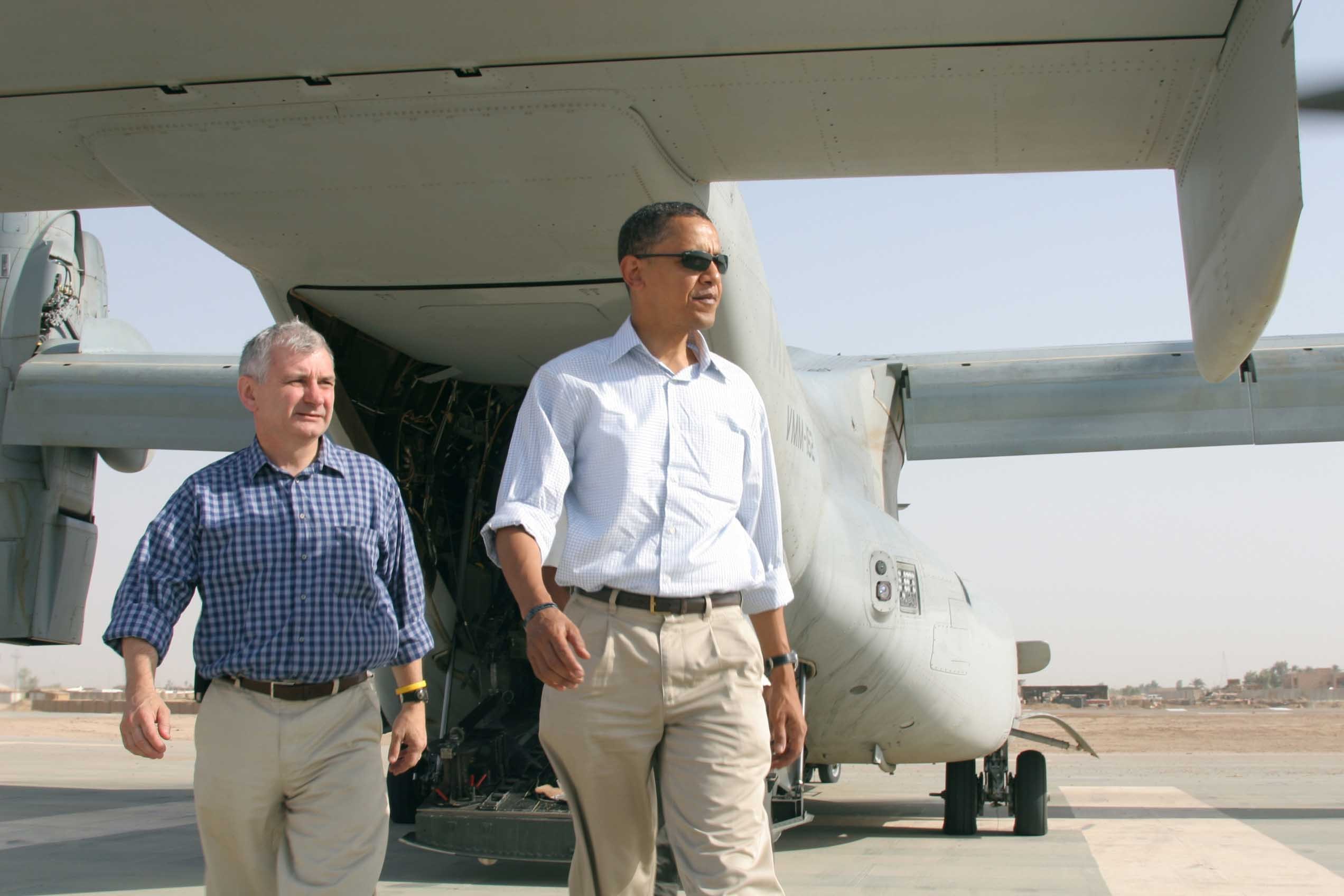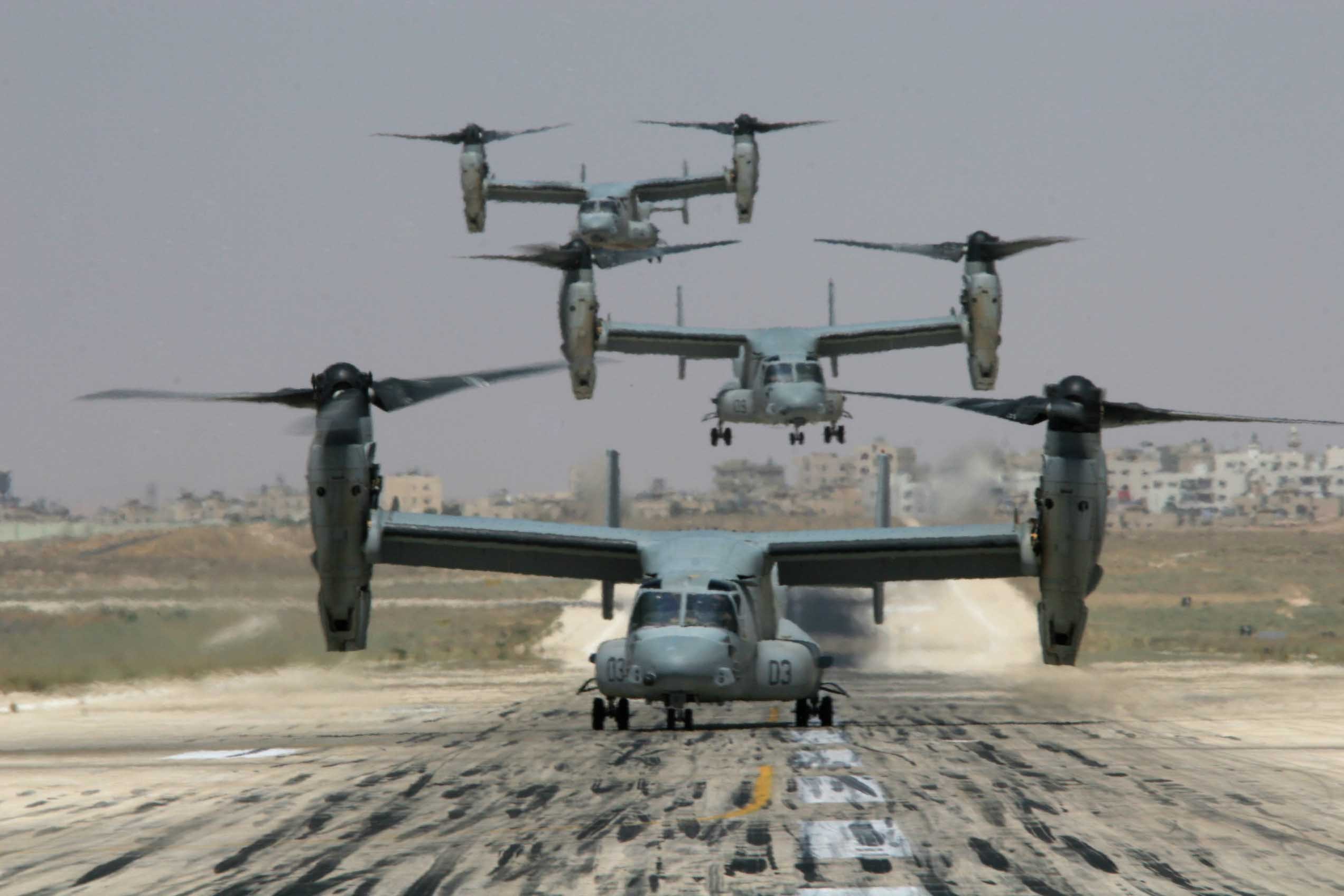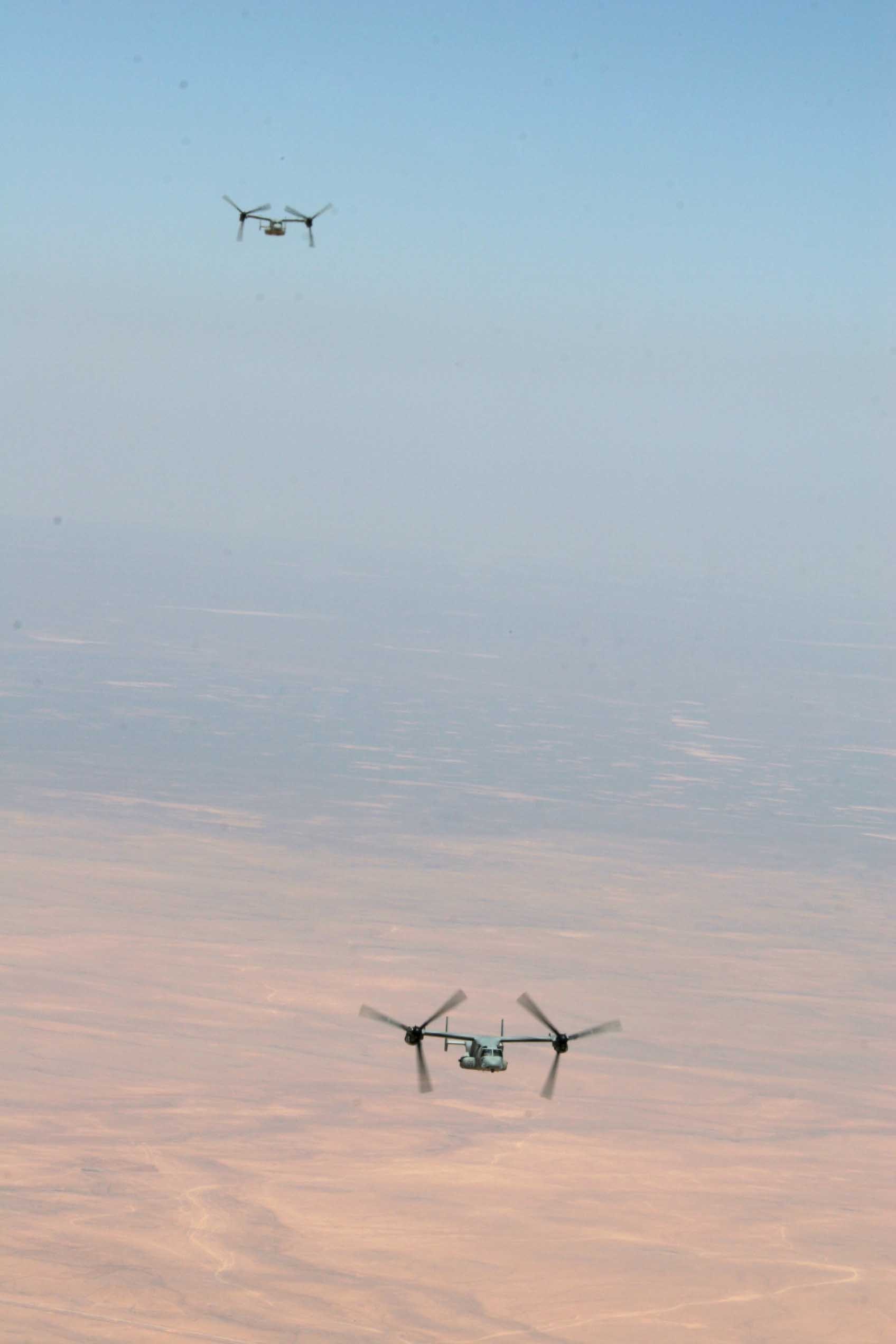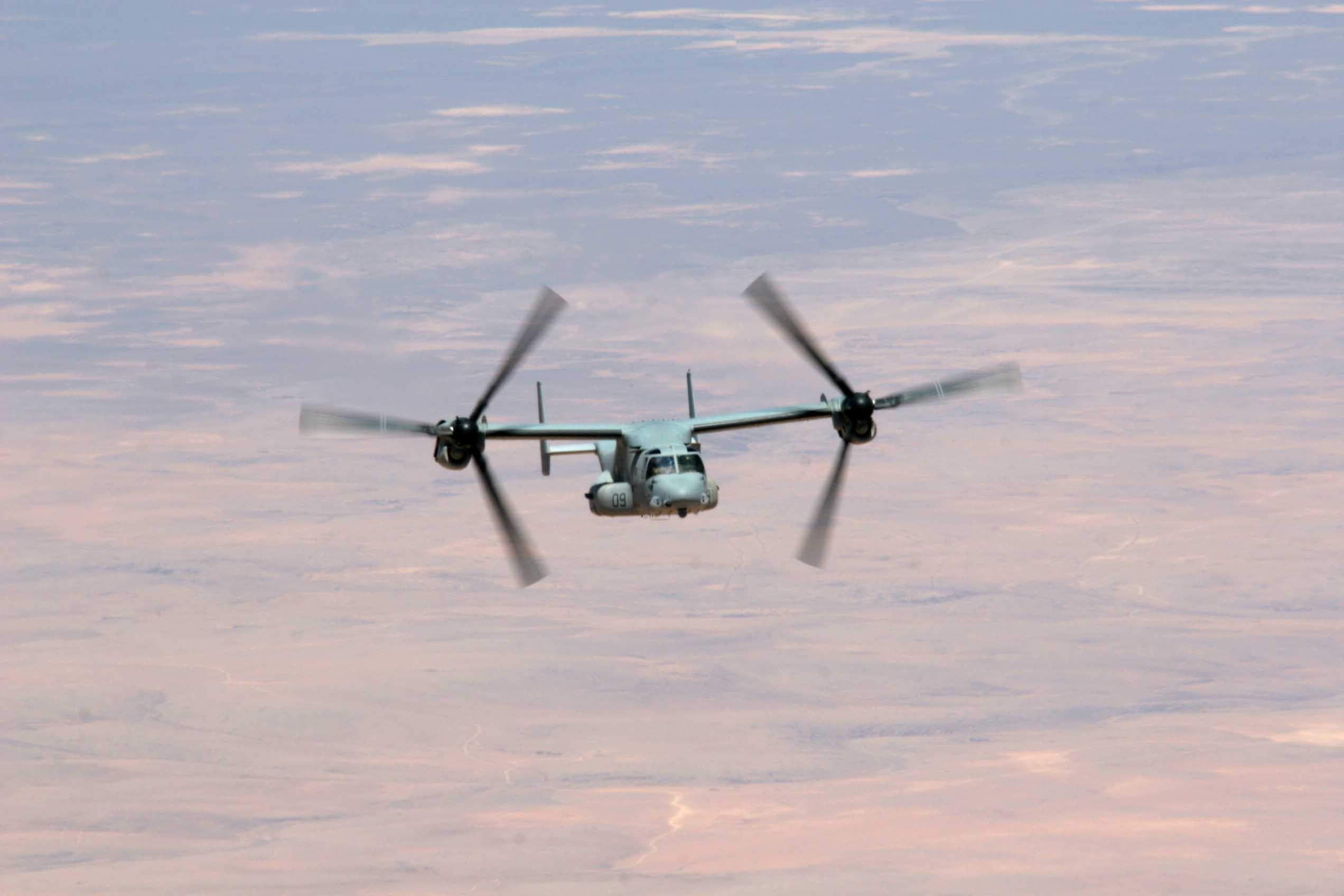By Robbin Laird
Recently, LtGen Heckl retired from the USMC after 37 years of service. He has held several command positions and has a wealth of combat experience. In a series of interviews with him, we will be discussing both his experience and his judgement with regard to the way ahead for the joint force as it addresses the challenges of the evolving strategic environment.
In this first interview, we focused on his experience with the Osprey and how he views its role and impact on USMC operations. We discussed this from the standpoint of his own experience with the aircraft beginning with his initial engagement with the program, his deployment to Iraq and then his experience with the aircraft as it has evolved over time within the context of USMC operations.
We started with his initial involvement with the aircraft. He came to the Osprey from a CH-46 background and operations with that aircraft in a variety of combat situations. Heckl noted that when he left as at MAWTS-1 instructor in 1999, he had been selected as one of the initial members of the new VMMT-204 squadron to replace HMT-204. There were two accidents involving the aircraft in 2000 which slowed down the process of launching VMMT-204 so Heckl left to deploy with HMM-263 which formed the Aviation Combat Element for the 24th Marine Expeditionary Unit and participated in the initial combat operations in Operation Iraqi Freedom.
Heckl then came back to Washington where he was attached to the office of the Deputy Commandant for Aviation, Headquarters Marine Corps, where he worked as the requirements officer for the Osprey. He first flew the aircraft in May 2000 and by the time he was back in Washington he had accumulated 160 hours on the aircraft.
Heckl was now a Major working for the Deputy Commandant for Aviation. And during that time Col Glen Walters, who later became the 34th Assistant Commandant of the Marine Corps from 2016 to 2019, was the Commanding Officer of VMX-22 and putting the Osprey through Operational Evaluation, specifically Operational Test-IIG, testing the platforms operational effectiveness and suitability.
I dealt often with VMX-22 in the past, but it has now become VMX-1.
As one source described VMX-22:
“Marine Tiltrotor Operational Test and Evaluation Squadron Twenty-Two (VMX-22) is a United States Marine Corps tiltrotor squadron consisting of MV-22 Osprey aircraft. The squadron, known as the “Argonauts”, is based at Marine Corps Air Station New River, North Carolina. VMX-22 stood up in August 2003 and reports to the Commander, Operational Test and Evaluation Force (COMOPTEVFOR), who in turn reports test data and results to the Office of the Secretary of Defense, Director, Operational Test and Evaluation.”
Heckl then got selected for command of an Osprey squadron which deployed as the second squadron into Iraq in 2008. It was a seven-month deployment to Al Assad Airbase in Iraq and the deployment spanned the brutal summer months and the aircraft according to Heckl “performed spectacularly” primarily a function of hard work by the maintenance Marines.
I asked him to take us back to that initial period to remember what were the expectations at the time with regard to the initial Osprey deployments.
“We knew that the aircraft had unique speed, range, payload flexibility, unique survivability capabilities.
“But our awareness of what it could do came with the use of the aircraft in real world situations.
“For example, Senator Barack Obama came over with Sec Def Hagel and Senator Jack Reed. We had to support Senator Obama moving around. I launched five airplanes. I was in one of them. But we only needed three of them but we launched backups to be ready.
“We had to land at a Forward Operating Base (FOB) just east of the Baghdad International Airport. We had to do a vertical landing in sequence with three aircraft to carry all of the people involved.
“We flew all the way across the country of Iraq, into Jordan, and went to Marka International Airport to drop off Senator Obama. We landed. We didn’t shut down, didn’t get gas, and we were on the deck for probably 20-30 minutes after dropping him off and we took off again, flew back into Iraq and had enough gas to service two assault support requests before we got gas.
“If we were using CH-46s that would have taken us two days and several landings for gas.
“That was an eye opener for me, and I thought back to when we invaded Iraq back in 2003. Flying the frog, I launched off the USS Nassau. I barely made it to Jabala airfield, before we had to get gas. And here, the V 22 was traversing almost the entire width of Iraq, and covering a third of the country of Jordan, and then back into Iraq on one bag of fuel. Just amazing.
“The other part about the airplane that we realized was survivability. So back then, the zones were designated a color code. Green is obviously good. Black was the worst. So if you had a black zone, you could go only go in at night. The Osprey operated in the black zones comfortably.
“We would ingress to the objective while we wore night vision goggles. And then at the pre brief point, we would pull the thrust control lever, the TCL or the gas pedal, essentially to flight idle and then we would just start the slow, gradual spiral.
“We had very minimal infrared (IR) signature. The most significant contributor to IR signature is hot gas impingement. Hot gas comes out of the 46 or a 53 and heats up the surface of the aircraft.
“With the V-22 its two big heat generators are the engines. Those two powerful engines are located on the wing tips, sitting at the dead center of a 38-foot proprotor that’s blowing hurricane force air around it. And both engines have full time infrared suppressors. And not to mention that while you’re doing that, your acoustical signature is virtually eliminated, you’re just basically gliding on the wing. You got down to a certain altitude, and you’d level off, maintaining at or below 200 feet AGL above ground level.
“So we stay out of the small arms fire and RPG envelope, and reduced our signature to MANPADS. So the heat signature is low, the acoustical signatures is low, and then less than a mile from the landing zone is when you actually have to start putting in power to do a vertical landing.
“In other words, the survivability is just phenomenal. Of course, the systems on the aircraft since then have been upgraded. The automation has progressed by leaps and bounds. There is virtually no LZ the aircraft can not land in regardless of dust condition.”
I pointed out that the discussion of Osprey safety – which is about the same level as most rotorcraft – has completely ignored the impact of the aircraft on survivability. How many lives have been saved by the tiltrotor aircraft and how it operates is not a common subject.
Heckl agreed completely and argued that safety is a factor in survivability, but the focus has to be on survivability.
“As a former MAWTS-1 instructor and then as CO, our focus was very much on the Tactics, Techniques and Procedures (TTPs) for enhanced survivability. And with regard to rotorcraft, a key survivability challenge comes with regard to ingress and egress from a LZ. With the Osprey, we can approach or leave the LZ from a variety of points differently from rotorcraft and with speed they simply do not have. In Iraq, we would go through the small arms and RPG envelope in seconds.”
In 2010, Heckl became the CO of MAWTS-1 where the first class of Ospreys were integrated into the TTPs being worked at this unique warfighting center.
My colleague Ed Timperlake and I have recently published a book on MAWTS-1 and as LtGen (retired) George Trautman, former DCA, commented about MAWTS-1: “How did MAWTS-1 evolve to become such an indispensable pillar within the Marine Corps? Its significance lies in its role as the premier training unit for Weapons and Tactics instruction, where it refines and disseminates cutting-edge concepts of employment – often with new weapons that have potential capabilities never previously imagined.
“By continually adapting to emerging threats and technological advancements, MAWTS-1 ensures that Marine aviators are equipped with the skills and knowledge necessary to excel in the ever-evolving landscape of modern warfare. The squadron’s contributions extend beyond training, influencing the development of new doctrines and fostering a culture of innovation within the Marine Corps aviation community.
“In essence, MAWTS-1 serves as a linchpin in maintaining the Marine Corps’ tactical edge, preparing its aviators for the challenges of today and the uncertainties of tomorrow.”
Heckl argued that the coming of the Osprey to MAWTS-1 in 2010 was part of honing the warfighting edge of the USMC going ahead. “Professionally, sound, and tactically planned missions are inherently safe. That is what we focused on in MAWTS-1. Safety is part of survivability.
“For a combat pilot, safety is part of the survivability issue. And that’s why I love MAWTS-1.
“We now had the V-22 collaborating with all the other rotorcraft and for me V 22 needs to be discussed in terms of operating with the KC-130Js. I would express caution for anybody to discuss V 22 without every other sentence talking about KC-130J. It is a phenomenal workhorse and when paired with the V-22 creates an incredible operational envelope for the Marines.”
His next assignments after leaving MAWTS-1 in 2011 and until his becoming the commander of 2nd Marine Air Wing in 2018 included the following: J3 Director of Operations, United States Forces- Afghanistan (USFOR-A), Kabul, Afghanistan, Military Assistant to the Secretary of the Navy, Assistant Deputy Commandant for Aviation, HQMC Aviation Department, Washington DC, and Chief of Staff, Naval Striking and Support Forces NATO (STRIKFORNATO), Lisbon, Portugal.
For the purposes of this interview, we next focused on his time serving as the Military Assistant to the Secretary of the Navy. Heckl related his experience in working with the Sec Nav and introducing him to the Osprey and its impact. And this experience would lead the Navy to start seriously its journey to acquire the aircraft for the replacement of the C-2 in the support role for the large deck carriers.
This is a story I have never heard before and frankly of great interest to the question of building out what would become a tiltrotor enterprise. At the time during this tour in the Pentagon, the Sec Nav was Ray Mabus and the CNO was Admiral Greenert.
According to Heckl: “I am now a Colonel, and the Sec Nav wants to go out on the Bush to see the X-47 unmanned platform operating off of the large deck carrier. The staff is organizing the visit whereby he flies by aircraft to Norfolk and then take the C-2 aircraft onto the carrier. I observe that the Secretary is not pleased with how much time this going to take. I suggested to the Secretary that there was a way to go from the Pentagon helo pad directly to the Bush. I went to meet LtGen Schmidle, DCA, and he offered an Osprey. The Secretary used the aircraft and when he returned to the Pentagon, he turned to the CNO and asked: “Why are we not buying this?”
Heckl went on to work with LtGen Davis as assistant DCA, Commander of 2nd MAW, CG of 1 MEF and retired as Commanding General Marine Corps Combat Development Command. In those positions, he saw the Osprey evolved into a multi-mission aircraft with an ability to perform very flexible roles with its roll on and roll off capabilities. I talked with Heckl when he held all of those positions about aviation and combat development issues and have published these interviews throughout the years.
But we concluded by discussing the growing relevance of the Osprey to the joint force and the USMC with the focus increasingly being upon distributed operations.
According to Heckl: “Logistics, C2 and maneuver are three key warfighting functions. The Osprey can deliver all three to a distributed force in unique ways. We have only scratched the surface of what this aircraft can deliver for the distributed force. But to get full value our of our fleet, we need to invest in and provide mid-life upgrades.”
We then discussed a subject which is not often the focus of defense modernization discussions, which is really the question of paying for the stretched service lives of equipment and in this case aircraft. The Marines used their aircraft extensively in the Middle Eastern land wars, and the investments in repairing and modernizing those aircraft was never really made. The Marine Corps and its air capabilities has been stretched and needs near term investments.
The Osprey is a clear case of such an aircraft, one which needs mid-life upgrades to extend its service life.
The B-52 is still relevant because of regular investments in upgrades; the Osprey needs to have such a funding path as well.






